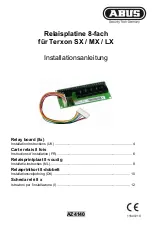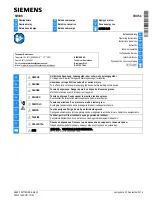
6
Troubleshooting
Finding the reason why the isolator disconnected the battery is mainly based on reading device flags.
Flags can be read via Light Client software. Possible options are listed below:
•
Device turned off and there are no flags active.
◦
Power save switch was activated.
◦
Supply voltage dropped below 6V.
•
overvoltage warn
- warning only, doesn't turn off the device.
•
undervoltage warn
- warning only, doesn't turn off the device.
•
overheat warn
- warning only, doesn't turn off the device.
•
overheat kill
- internal device temperature exceeded 95°C
◦
Reduce device current load.
◦
Install device in colder environment.
◦
Install device on chassis with thermal conductive material to spread the heat.
•
overcurrent kill
- current limit was exceeded.
◦
check car wiring and devices for shorts or malfunctions
◦
increase
Current limit
•
emergency kill
- emergency switch was activated
◦
If this wasn't intended, check emergency switch circuit for continuity.
•
powersave kill
- flag is active when power save switch is active. It leads to device turning off
completely.
•
CAN kill
- device was turned off with CAN bus message
◦
it this wasn't intended, check if there aren't any devices sending messages on ID set up in
Emerg. kill ID
field, or on the following 3 id's.
•
UVLO kill
- supply voltage dropped below specification.
◦
Check if battery is sufficiently charged.
◦
Check if supply wires are properly fastened.
•
load dump occurred
- current was flowing to the battery, while device was disconnecting the
battery.
◦
PMU/ECU output doesn't shut down engine properly.
◦
Timeouts are too short. Engine should stop before disconnecting battery.
































